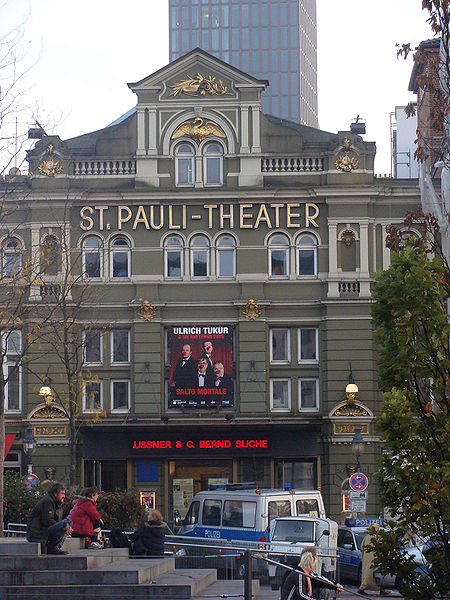St. Pauli
St. Pauli, the neighbourhood on the harbour, was founded at the beginning of the 17th century. It was initially called 'Hamburger Berg' (Hamburg Hill) and was situated outside the gates of the nearby town of Hamburg. The name comes from a fort that was built by the rulers of Hamburg in 1620. Settlement here was initially forbidden, but soon businesses that were considered undesirable due to their smell or noise levels were banished to the 'Hamburger Berg'.
The rope and fishnet makers (or 'Reeper' in Low German) came here because it provided enough space for their work. The name of St. Pauli's most famous street, the Reeperbahn or "Rope Walk", harkens back to this past. At the end of the 17th century, once it became legal to live in St. Pauli, the municipal government moved workhouses and (plague) hospitals out of the town centre to 'Hamburger Berg,' which was later was re-named after its church, 'St. Pauli'. The ‘Hamburger Berg’ still shares its name with a St. Pauli street famous for its clubs and bars.
A prominent symbol of St. Pauli is the St.Pauli football club, FC St. Pauli and the Millerntor-Stadium. The club played host to the inaugural FIFI Wild Cup in May–June 2006. In 2010 the FC St. Pauli had its hundredth birthday and to mark the occasion, the Fan club 18auf12 recorded a song: One Hundred Beers (Words and music by Henning Knorr & Christoph Brüx).
The Bernhard Nocht Institute for Tropical Medicine (BNI) is also located in this neighbourhood. It is a research centre for tropical and infectious diseases and also provides an information centre about health risks, vaccinations and medical data in other countries and for health advice regarding tourism and travel.
The rope and fishnet makers (or 'Reeper' in Low German) came here because it provided enough space for their work. The name of St. Pauli's most famous street, the Reeperbahn or "Rope Walk", harkens back to this past. At the end of the 17th century, once it became legal to live in St. Pauli, the municipal government moved workhouses and (plague) hospitals out of the town centre to 'Hamburger Berg,' which was later was re-named after its church, 'St. Pauli'. The ‘Hamburger Berg’ still shares its name with a St. Pauli street famous for its clubs and bars.
A prominent symbol of St. Pauli is the St.Pauli football club, FC St. Pauli and the Millerntor-Stadium. The club played host to the inaugural FIFI Wild Cup in May–June 2006. In 2010 the FC St. Pauli had its hundredth birthday and to mark the occasion, the Fan club 18auf12 recorded a song: One Hundred Beers (Words and music by Henning Knorr & Christoph Brüx).
The Bernhard Nocht Institute for Tropical Medicine (BNI) is also located in this neighbourhood. It is a research centre for tropical and infectious diseases and also provides an information centre about health risks, vaccinations and medical data in other countries and for health advice regarding tourism and travel.
